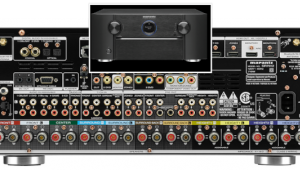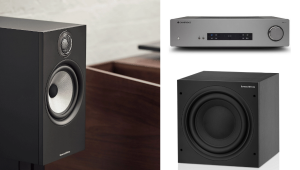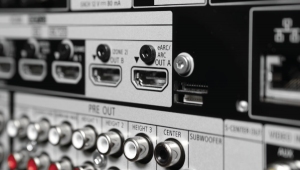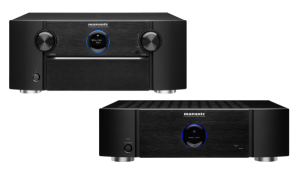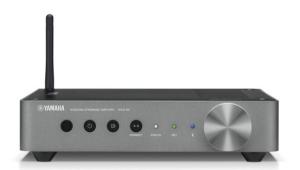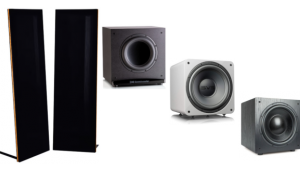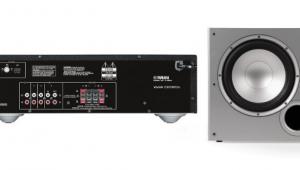PIP, Bi-Amping, Burn-In

Why is it difficult to find new TVs with PIP (picture-in-picture). I'm looking for a new set to watch multiple sports channels on, so motion blur is also an issue.
Brent Iverson
Actually, many flat-panel TVs still have PIP capabilities, but unlike TVs in the past, today's models do not have dual tuners. Instead of being able to tune in two different channels within the TV and display one in the main portion of the screen and the other in an inset window, one or both signals must come from an external source, such as a Blu-ray player or cable/satellite box. This makes sense when you consider that something like 80 percent of households get their TV via cable or satellite, not over the air using the TV's internal tuner.
In fact, most modern cable and satellite receivers provide multiple tuners and PIP functionality independent of the TV. In most cases, you can tune in two different channels in the cable or satellite box and display them both on the TV, either side by side or with one in an inset window; the specific capabilities depend on the box you're using.
FYI, current-model flat-panel TVs that provide PIP with external sources include those from Samsung, Sony, Vizio, and Pioneer. TVs with no PIP capabilities include those from Panasonic, LG, and Sharp. Toshiba hasn't gotten back to me with an answer to this question.
Here's a thoughtif you have an ATSC antenna (rooftop or in-room) as well as a cable or satellite box, you could connect the antenna to the TV, engage PIP in the cable or sat receiver, and also engage the TV's PIP function in order to watch three different channels at the same time. You'd need to arrange the windows in the cable or sat box and the TV so the PIP windows didn't overlap, which might or might not be possible depending on the box and TV.
If motion blur is important to avoid, the best choice is a plasma TV from Samsung or Pioneer (while they last). However, I'd be a bit concerned about image retention if you're going to have PIP windows on the screen most of the time. In this case, just engage the TV's screen-wipe function every once in a while to combat this.
Otherwise, a 120Hz or 240Hz LCD would work if you don't object to a "video-like" look that these sets impart to the picture when frame interpolation is enabled (which it must be to reduce motion blur). Also, keep in mind that watching any LCD off to one side reduces the apparent picture quality substantially, which is another reason to prefer plasma.
Two Amps Aren't Better Than One
I have two pairs of B&K monoblocks, 200W each, bi-amping my speakers. If I want to replace them with one pair, how much power should that one pair have in theory to get an equivalent or better result?
Charles Frierson
I'll let Tom Norton handle this one:
It's not clear whether or not you are bi-amping with or without using the speakers' internal crossovers. In the pro world, bi-amping implies a direct amp feed to each driver with electronic crossovers in front of the amps. But in the audiophile world, more often than not it means using the bi-wire/bi-amp input terminals of the speakers with a separate amp feeding each one. That means the speaker's passive crossovers remain in the circuit.
The situation is complicated by the fact that most consumer speakers use the crossover network for more than just dividing the audio into frequency bands suitable for the drivers. They often to correct for driver anomalies, flatten driver impedance, provide proper phasing between the drivers, etc. You can do these sorts of things in the pro configuration (no passive crossovers) with complex equalization and other processing in front of the amps in conjunction with electronic high- and lowpass filters, but that's beyond the reach of most audiophile hobbyists.
If you were to rip out the passive crossovers from your speakers and connect the drivers directly to the amps with an electronic crossover to direct the frequencies to the proper drivers but with no additional processing, the result would most likely sound terrible, because you will have removed all the other correction factors that are an inherent part of a carefully balanced speaker design. (You will also have voided your warranty!)
Assuming you are using the audiophile approach for bi-ampinga pair of full-range amps driving the separate woofer and tweeter (or, more likely, woofer and midrange/tweeter) terminals of each speakerit's possible you are gaining little by using bi-amplification, though the amp manufacturer and dealer have gained by the sale of two more amps! One way to check this would be to reconfigure the system to use just one of the amps to drive each speaker in the conventional mode, setting the other amps aside for the moment. Does the system sound better? Worse? The same? I would suspect the latter, though without hearing the specific system, it's hard to say.
You might think you'd need a single 400W amp to replace two 200W amps, but it ain't necessarily so. For one thing, the tweeter and midrange consume very little power compared with the woofer, so much of the 200W available from the amp that's currently driving those elements is probably going unused. Also, a different ampeven from the same manufacturercan easily sound different than the ones you have, so achieving an "equivalent or better result" is more complicated than simply considering power output. If you like the sound of the B&Ks you have, I'd try using only one for each speaker before I'd buy new ones.
Worry Wart
I was finally able to purchase my dream TV (a Pioneer Elite Kuro). I'm eager to power it up, but I won't do so until I have some consistent information on burn-in protection. I've been told that burn-in is a thing of the past and aside from long-standing static images, I need not worry.
My concern is that I still watch some standard-def television (gasp!), so should I worry about the black bars on the sides? Should I likewise worry about the small logos at the bottom of the screen (CBS, NBC, etc.)? I'm also an avid sports fan, so should I worry about the scoreboard that's constantly at the top or bottom of the screen during broadcast sports?
Jamil Johnson
There's no need to worry; burn-in is indeed mostly a thing of the past. I have a Kuro, and I watch 4:3, 16:9, and letterboxed movies on it with no problem. If you watched only 4:3 or letterboxed movies, it might cause uneven aging over many months or years, but as long as you display some full-screen material on a regular basis, no worries. I don't think the network logos or scoreboards are a problem either, as long as they don't stay on the screen for months or years. If you're still concerned, the Pioneer provides a "screen-wipe" function that removes any temporary image retention, so you can use that once a month or so just to be sure.
If you have a home-theater question, please send it to scott.wilkinson@sorc.com.
